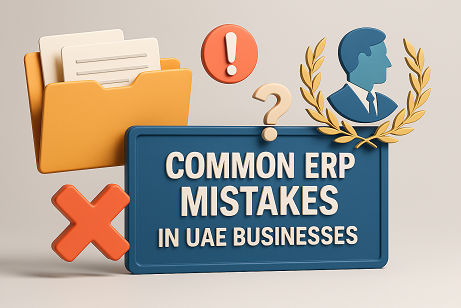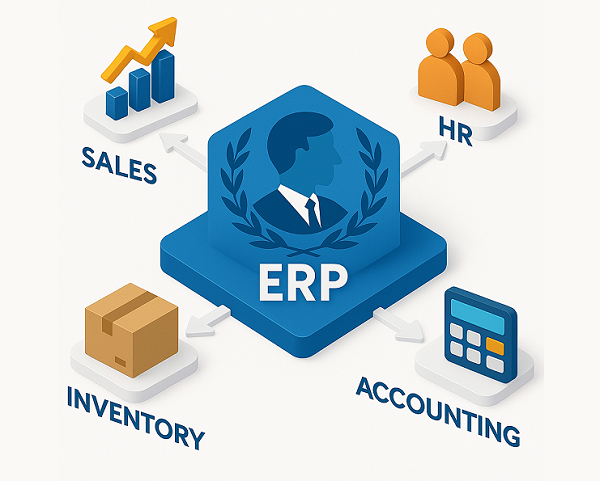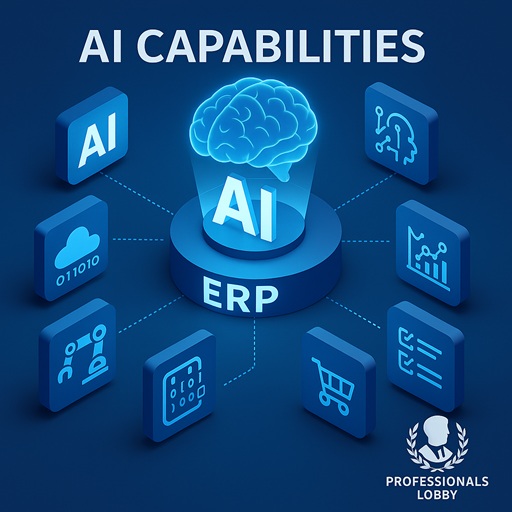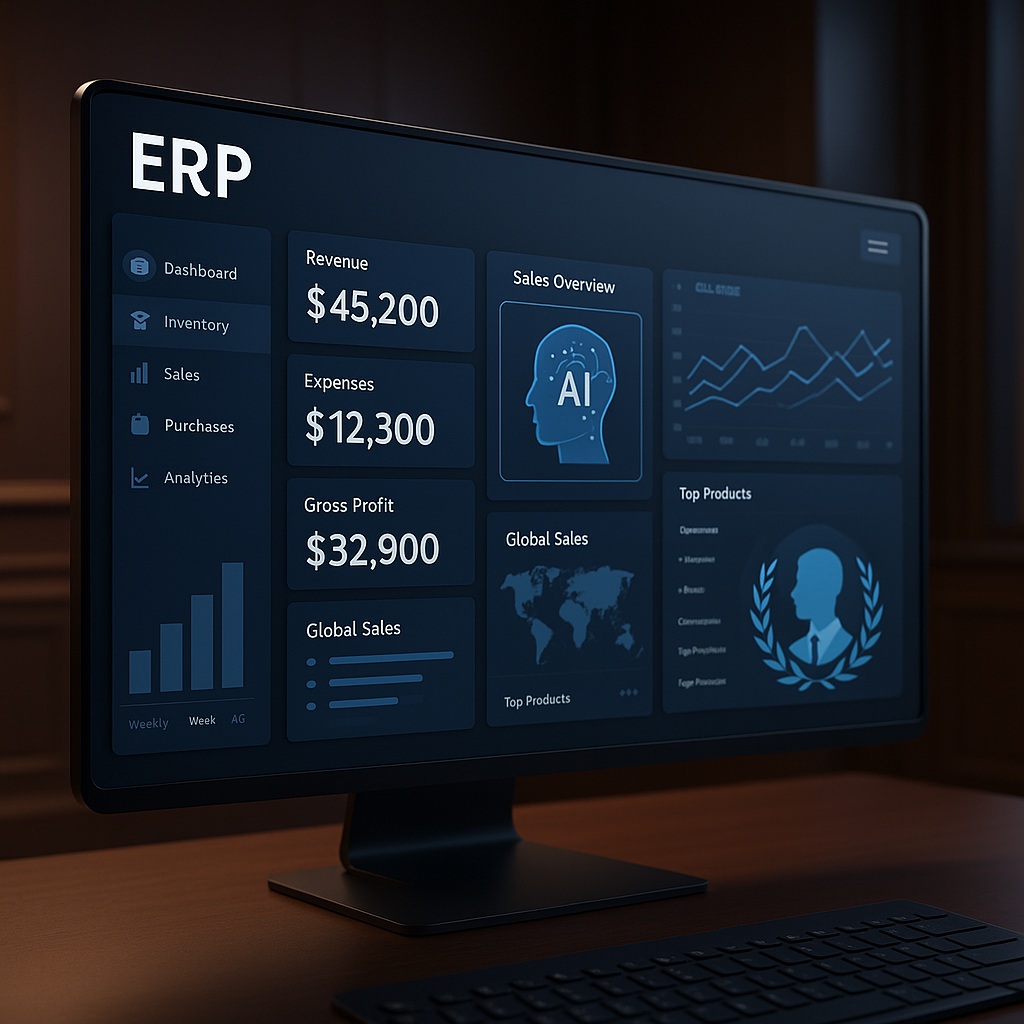ERP implementations in the UAE fail at an alarming rate - our research shows over 60% of projects face significant challenges or outright failure. After consulting on hundreds of ERP deployments across Dubai, Abu Dhabi, and the wider UAE, the Professionals Lobby team has identified the 10 most critical mistakes companies make when implementing ERP systems. This comprehensive guide reveals these costly errors and provides actionable strategies to avoid them, ensuring your ERP project delivers maximum value.
Key Takeaways:
- Over 60% of UAE ERP implementations face significant challenges or failure
- Cultural and regulatory factors unique to the UAE contribute to common mistakes
- Proper planning and expert guidance can prevent most implementation pitfalls
- The right ERP partner is critical for UAE-specific compliance and localization
- Ongoing training and change management determine long-term success
Quick Navigation
Choosing the Wrong ERP System for UAE Requirements
The most fundamental mistake UAE businesses make is selecting an ERP system that doesn't align with their industry requirements, company size, or local compliance needs. Many organizations choose based on brand reputation or competitor choices rather than conducting a proper needs assessment.
UAE Case Study: Manufacturing Company
A Dubai-based manufacturer with 200 employees selected SAP S/4HANA because "it's what large companies use," despite their operations being better suited to SAP Business One. The implementation took 18 months (vs. projected 6), cost 3x the budget, and required extensive customization just to handle basic manufacturing workflows.
How to Avoid This Mistake:
- Conduct a thorough needs analysis before evaluating systems
- Prioritize UAE-specific functionality like VAT compliance, Arabic support, and local reporting
- Evaluate vendors with UAE experience - global features often need localization
- Consider industry-specific versions of major ERP systems
- Engage an independent consultant to provide unbiased recommendations
Professionals Lobby Insight:
"We see many UAE companies paying for enterprise-level ERP features they'll never use. A mid-market solution like Dynamics 365 Business Central or SAP Business One often provides better value for companies with under 500 employees. The key is matching system complexity to your actual business needs."
Over-Customizing the ERP System
UAE companies often fall into the trap of excessive customization, trying to make the ERP system perfectly match their existing (often inefficient) processes rather than adapting their processes to industry best practices built into the software.
Problem Approach
"We need the system to work exactly like our old Excel/legacy system"
- 200+ customization requests
- 18-month implementation
- Future upgrade challenges
- High maintenance costs
Recommended Approach
"We'll adapt our processes to leverage built-in best practices"
- 20-30 strategic customizations
- 6-month implementation
- Smooth upgrade path
- Lower TCO
How to Avoid This Mistake:
- Follow the 80/20 rule - customize only where it provides competitive advantage
- Document customization rationale for each requested change
- Evaluate configuration options before considering customization
- Future-proof customizations to survive version upgrades
- Implement in phases - add customizations only after core functionality is live
Ignoring UAE-Specific Localization Needs
Many multinational ERP systems aren't designed for the UAE's unique business environment out of the box. Critical localization requirements often overlooked include:
VAT Compliance
Proper tax codes, reporting, and invoice requirements
Arabic Support
Right-to-left layout, Arabic data entry, and bilingual reports
Dual Calendars
Gregorian and Hijri date support
Legal Formats
UAE-specific contract templates and document formats
How to Avoid This Mistake:
- Verify localization features during vendor selection
- Engage local implementation partners with UAE expertise
- Test compliance features before go-live
- Consider GCC-specific ERP versions where available
- Budget for localization work even with global systems
Professionals Lobby Insight:
"We've rescued multiple implementations where global systems failed to handle basic UAE requirements like VAT invoice numbering or Arabic financial reports. Always ask vendors for references from UAE clients in your industry to verify localization capabilities."
Poor Data Migration Strategy
Data quality issues are among the most common causes of ERP implementation delays in the UAE. Problems include duplicate records, inconsistent formatting, missing fields, and legacy system artifacts that don't translate well to modern ERP platforms.
The Right Data Migration Process:
Data Audit
Assess quality and completeness
Cleansing
Fix errors and standardize
Mapping
Align fields to new system
Migration
Move cleaned data
Validation
Verify accuracy
How to Avoid This Mistake:
- Start data cleanup early - at least 3 months before migration
- Use AI-powered tools for SKU deduplication and standardization
- Migrate only essential data - don't bring legacy system "junk"
- Run parallel systems temporarily to verify data accuracy
- Assign data stewards from each department to validate
UAE Case Study: Trading Company
An Abu Dhabi trading company migrated 50,000 product SKUs without proper cleansing, resulting in 22% duplicate items and inconsistent pricing. Post-go-live inventory reconciliation took 3 months and revealed AED 1.2 million in discrepancies. Proper data cleansing would have taken 2 weeks pre-implementation.
Insufficient User Training and Change Management
ERP success depends entirely on user adoption, yet training is often the first budget item cut. UAE companies frequently underestimate the cultural shift required when moving from legacy systems or manual processes to modern ERP platforms.
Effective Training Approaches:
Role-Based Training
Customized for different user groups (accounting, warehouse, etc.)
Super Users
Train department champions to support peers
Micro-Learning
Short video tutorials for specific tasks
Documentation
Arabic/English quick reference guides
How to Avoid This Mistake:
- Budget 15-20% of project cost for training and change management
- Conduct training in phases - basic before go-live, advanced after
- Offer bilingual training to accommodate all employees
- Measure proficiency with post-training assessments
- Provide ongoing support for at least 3 months post-go-live
Professionals Lobby Insight:
"UAE's multicultural workforce presents unique training challenges. We develop customized programs accounting for language preferences (Arabic, English, Urdu, etc.), varying tech literacy levels, and different learning styles across generations in the workforce."
Underestimating Implementation Timeline and Resources
Many UAE companies set unrealistic implementation timelines, often pressured by leadership wanting quick results. This leads to cut corners, inadequate testing, and poor user adoption.
Typical UAE ERP Implementation Timelines:
SME Implementation
- System: SAP Business One, Dynamics 365 BC
- Duration: 4-6 months
- Team: 2-3 internal, 3-5 consultants
Mid-Market Implementation
- System: Dynamics 365, Oracle NetSuite
- Duration: 6-9 months
- Team: 5-7 internal, 5-10 consultants
Enterprise Implementation
- System: SAP S/4HANA, Oracle Cloud ERP
- Duration: 12-18 months
- Team: 10+ internal, 15+ consultants
How to Avoid This Mistake:
- Add 20% buffer to vendor timeline estimates
- Phase the rollout by location or function
- Dedicate internal resources - don't expect staff to handle ERP on top of regular duties
- Account for UAE holidays and slower summer months
- Plan for parallel runs to ensure smooth transition
Lack of Executive Sponsorship and User Involvement
ERP implementations often fail when treated as purely IT projects rather than business transformation initiatives. Without active leadership support and end-user participation, resistance to change can derail even technically sound implementations.
The ERP Sponsorship Pyramid:
Executive Sponsor
CEO/CFO level champion
Steering Committee
Department heads
Super Users
Department champions
End Users
All system users
How to Avoid This Mistake:
- Appoint a C-level sponsor with decision-making authority
- Form a cross-functional steering committee that meets weekly
- Involve end-users early in process design and testing
- Communicate regularly about project progress and benefits
- Address resistance proactively through training and support
Professionals Lobby Insight:
"In UAE's hierarchical business culture, visible executive support is especially critical. We recommend having the CEO or MD kick off training sessions and share regular video updates to emphasize leadership commitment to the ERP project."
Poor Integration Planning with Other Systems
Most UAE businesses need their ERP to connect with other systems like CRM, eCommerce, HRMS, or specialized industry applications. Failure to properly plan these integrations leads to data silos, manual workarounds, and frustrated users.
Integration Approaches:
Native Integration
Pre-built connectors from ERP vendor
Reliable Limited optionsMiddleware
Integration platforms like MuleSoft
Flexible Additional costCustom API
Developed specifically for your needs
Tailored Maintenance heavyHow to Avoid This Mistake:
- Map all integration points early in the project
- Prioritize native integrations where available
- Test integrations thoroughly before go-live
- Document data flows for troubleshooting
- Budget for integration specialists if needed
Inadequate Testing Before Go-Live
Testing is often reduced to meet deadlines, resulting in system instability, incorrect calculations, and user frustration after go-live. UAE companies frequently underestimate the testing needed for localized functionality like VAT calculations and Arabic reporting.
Essential ERP Testing Phases:
Unit Testing
Individual components by developers
System Testing
End-to-end processes by QA team
User Acceptance
Real business scenarios by end-users
Performance Testing
Load and stress testing
Regression Testing
After fixes or changes
How to Avoid This Mistake:
- Allocate 20-30% of project time for testing
- Test UAE-specific scenarios like VAT invoices, Arabic reports
- Involve actual end-users in acceptance testing
- Document test cases for future reference
- Run parallel tests with legacy systems
UAE Case Study: Retail Chain
A Dubai retail chain skipped Arabic report testing to meet a Ramadan deadline. Post-go-live, they discovered right-to-left formatting issues made financial reports unreadable, requiring emergency fixes during their busiest season.
Neglecting Post-Go-Live Support and Optimization
Many UAE companies consider the ERP project "done" at go-live, failing to plan for the stabilization period and ongoing optimization needed to achieve full value. This results in low user adoption, workarounds, and failure to leverage advanced features.
Post-Go-Live Roadmap:
0-30 Days: Stabilization
- Immediate issue resolution
- Additional training as needed
- Process adjustments
1-6 Months: Optimization
- Advanced feature rollout
- Performance tuning
- Additional integrations
6+ Months: Continuous Improvement
- New module implementation
- Advanced analytics
- Automation enhancements
How to Avoid This Mistake:
- Budget for 3-6 months of post-go-live support
- Schedule optimization workshops at 30/60/90 day intervals
- Monitor system usage to identify adoption gaps
- Establish an ERP center of excellence for ongoing improvements
- Plan for regular upgrades to stay current
Professionals Lobby Insight:
"Our most successful UAE clients treat ERP as a continuous journey, not a one-time project. They budget for annual optimization cycles to adopt new features, improve processes, and expand system capabilities as their business evolves."
ERP Mistake Comparison Table
Quick reference guide to the top ERP mistakes and how to avoid them:
| Mistake | Impact | Prevention Strategy | Criticality |
|---|---|---|---|
| Wrong System Selection | High costs, poor fit, low ROI | Thorough needs analysis, vendor evaluation | High |
| Over-Customization | Upgrade challenges, high TCO | 80/20 rule, configuration first | High |
| Ignoring Local Needs | Compliance risks, user rejection | UAE-specific testing, local partners | High |
| Poor Data Migration | Operational disruptions, errors | Early cleansing, validation | High |
| Insufficient Training | Low adoption, workarounds | Role-based, bilingual training | Medium |
| Unrealistic Timelines | Rushed implementation, quality issues | Buffer time, phased rollout | Medium |
| Lack of Sponsorship | Resistance to change, silos | C-level champion, steering committee | High |
| Poor Integration | Data silos, manual work | Early mapping, testing | Medium |
| Inadequate Testing | Post-go-live failures | Comprehensive test plans | High |
| Neglecting Optimization | Subpar ROI, stagnation | Post-live roadmap, COE | Medium |
ERP Implementation Success Checklist
Based on our experience with hundreds of UAE ERP implementations, here's a checklist to ensure your project avoids these common mistakes:
Planning Phase
- Conducted thorough needs analysis
- Selected system matching UAE requirements
- Engaged local implementation partner
- Established executive sponsorship
- Created realistic timeline with buffer
Implementation Phase
- Limited customizations to essentials
- Verified UAE localization features
- Cleaned and validated migrated data
- Tested all critical business scenarios
- Trained super users before go-live
Post-Go-Live Phase
- Planned 3-6 months support
- Scheduled optimization workshops
- Monitored user adoption metrics
- Established COE for continuous improvement
- Budgeted for annual upgrades
Get Expert Help Avoiding ERP Implementation Mistakes
Our ERP consultants have helped hundreds of UAE businesses successfully implement systems while avoiding these common pitfalls. Contact us for a free consultation.
Request Free Consultation


